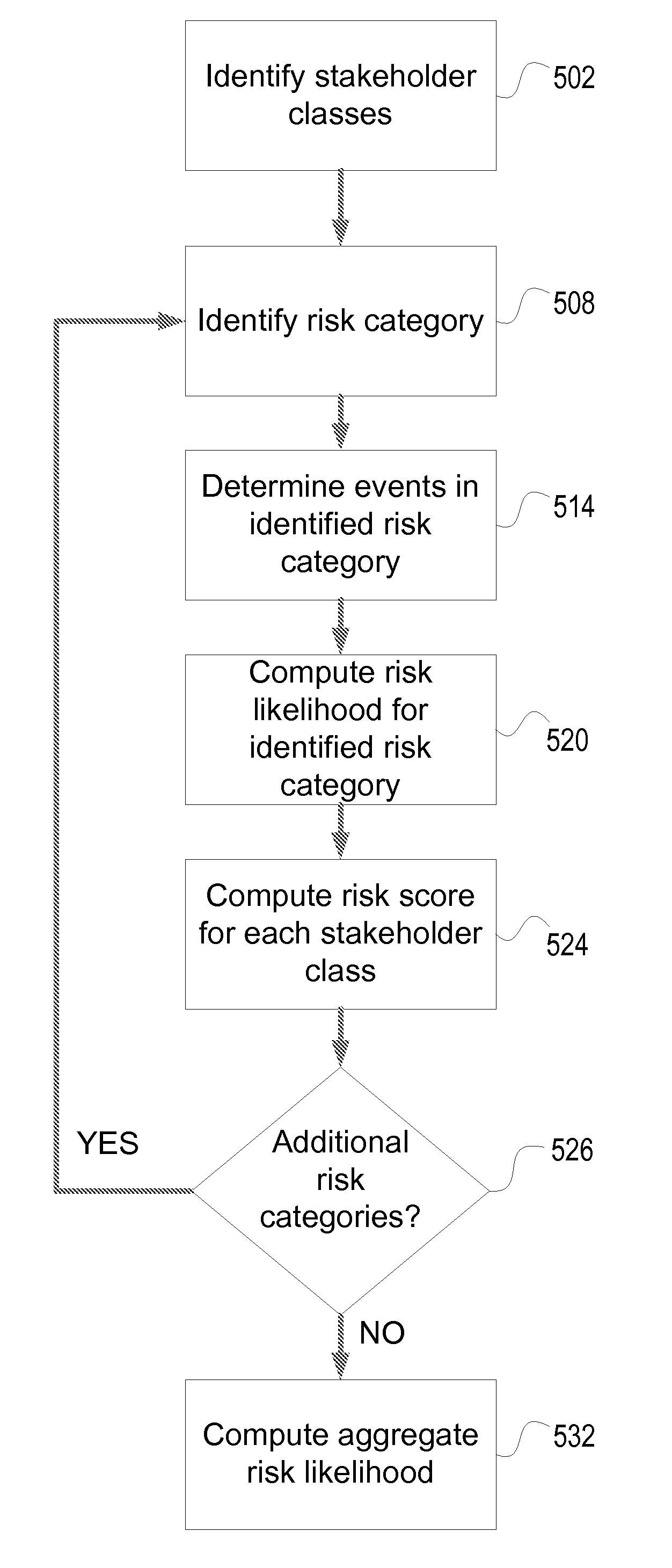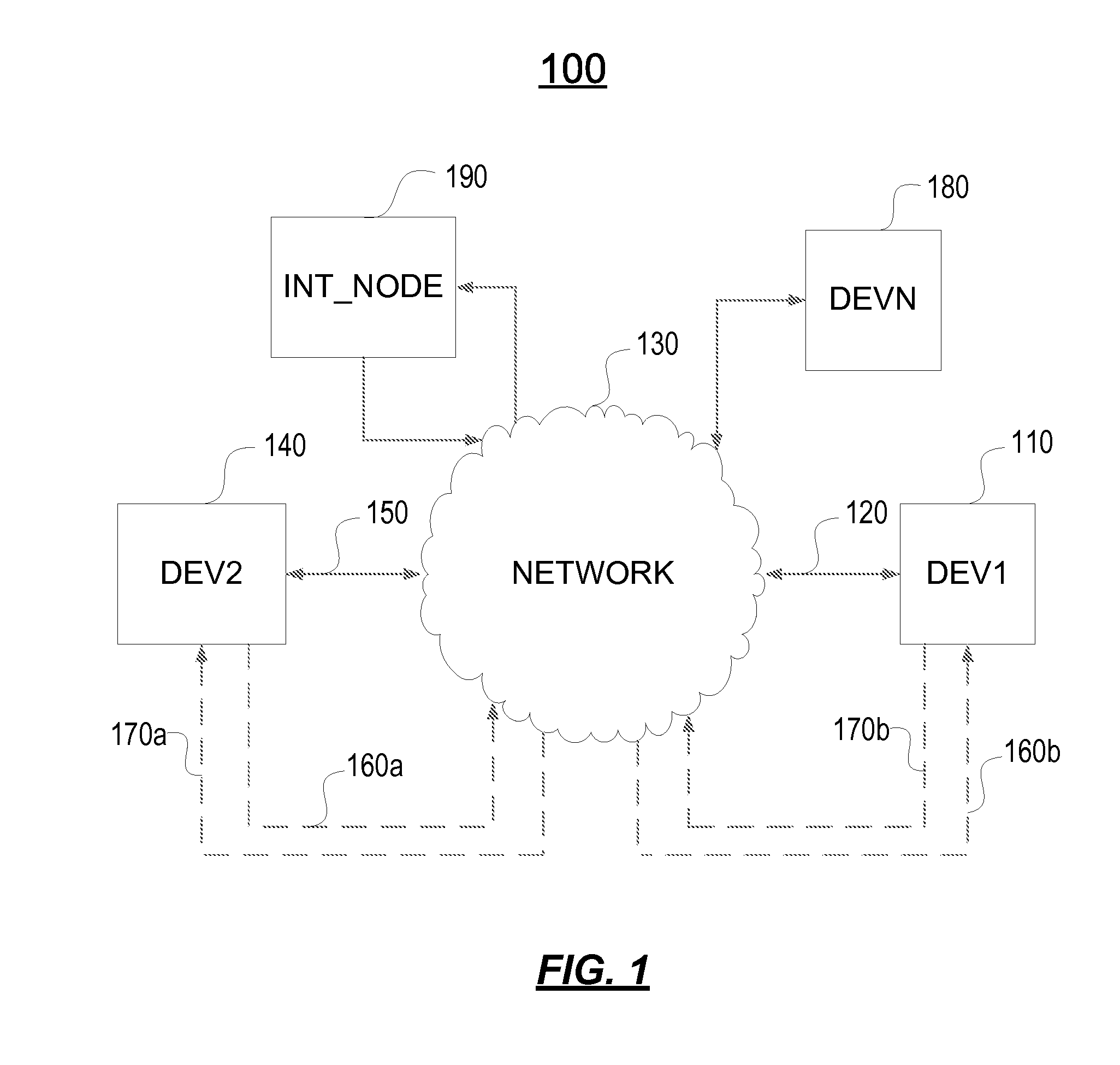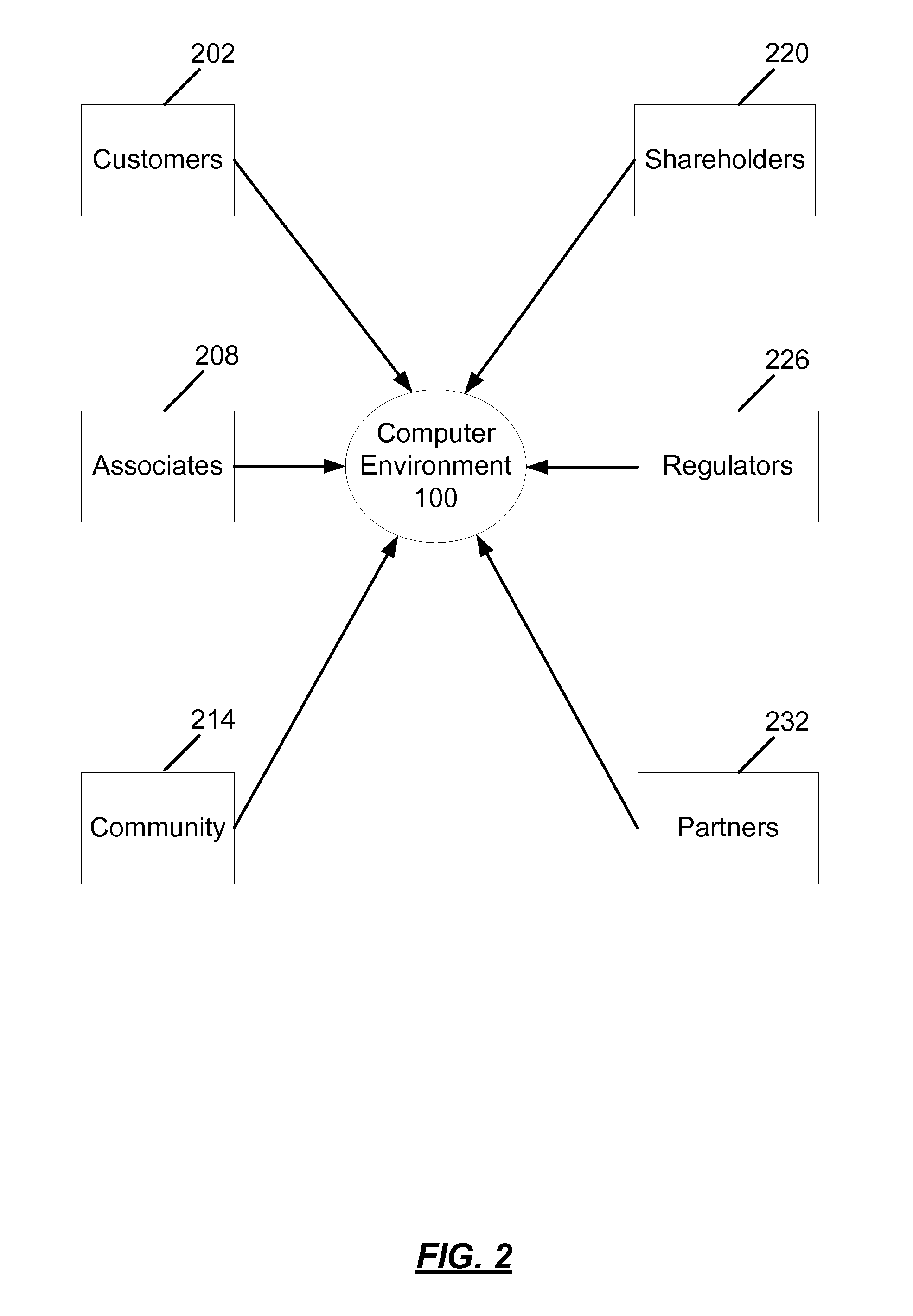Reputation Risk Framework
- Summary
- Abstract
- Description
- Claims
- Application Information
AI Technical Summary
Benefits of technology
Problems solved by technology
Method used
Image
Examples
Embodiment Construction
[0016]In accordance with various aspects of the disclosure, apparatuses, systems and methods are described for assessing risk. While largely stated in terms of reputational risk, the techniques and methodologies described herein may be adapted to accommodate other forms of risk assessment.
[0017]In some embodiments, risk assessment may be obtained in a manner ensuring analytical rigor and achieving consistent thresholds across business units. Elements of risk analysis and assessment may include a definitions phase, a governance phase, and an oversight and execution phase. With respect to a business or financial institution, the definitions phase may entail defining risk, determining categories of risk and classes of stakeholders, correlating events to (numerical) representations and assigning (relative) weights to the events. The governance phase may include identifying officials to enforce strategies to cope with risk areas identified by a heatmap. The oversight and execution phase ...
PUM
 Login to View More
Login to View More Abstract
Description
Claims
Application Information
 Login to View More
Login to View More - R&D
- Intellectual Property
- Life Sciences
- Materials
- Tech Scout
- Unparalleled Data Quality
- Higher Quality Content
- 60% Fewer Hallucinations
Browse by: Latest US Patents, China's latest patents, Technical Efficacy Thesaurus, Application Domain, Technology Topic, Popular Technical Reports.
© 2025 PatSnap. All rights reserved.Legal|Privacy policy|Modern Slavery Act Transparency Statement|Sitemap|About US| Contact US: help@patsnap.com



